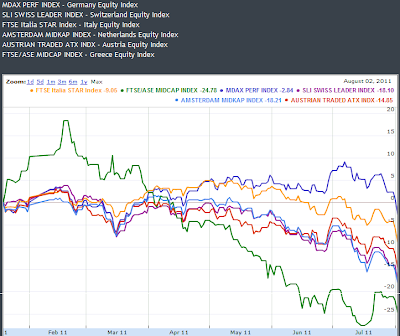Here's the latest version of this argument from, no surprise here, Paul Krugman: "Oh! What a lovely war!".
World War II is the great natural experiment in the effects of large increases in government spending, and as such has always served as an important positive example for those of us who favor an activist approach to a depressed economy. Christy Romer is very much on the same wavelength.WW II has to be the absolute worst case study to use to argue for any course of action in dealing with economic downturns. The conditions existing for the U.S. during and after the war were so singularly unique that it completely voids using that event as an example for what should or shouldn't be done today, or during any other economic crisis.
The infrastructure and productive capabilities of almost every advanced economy, BESIDES the U.S., had been either completely destroyed or significantly harmed. This is the key take away from that event. Futhermore, not only were our major global competitors incapacitated, they became massive consumers of U.S. goods and services for the next 10-20 years following the war. The economic conditions for the U.S. were so preferential that it was impossible for even the politicians and economists to screw things up.
In fact I would argue that the benefits of the post World War II environment lasted all the way up until the next century, some 50 years later. It was at that point when all of the major global competitors had finally caught back up: first Germany, then Japan and finally China. Now that the competitive advantages have been erased, the U.S. has resorted to massive deficit spending to maintain the status quo and the same quality of life for its citizens. That cannot go on forever, and it won't.
So Mr Krugman, what the U.S. needs is not just any old garden variety war. We need one that is tailored specifically to wipe out the productive capabilities of the rest of the world while leaving ours intact (with us now being in the nuclear age, good luck with that one).
























